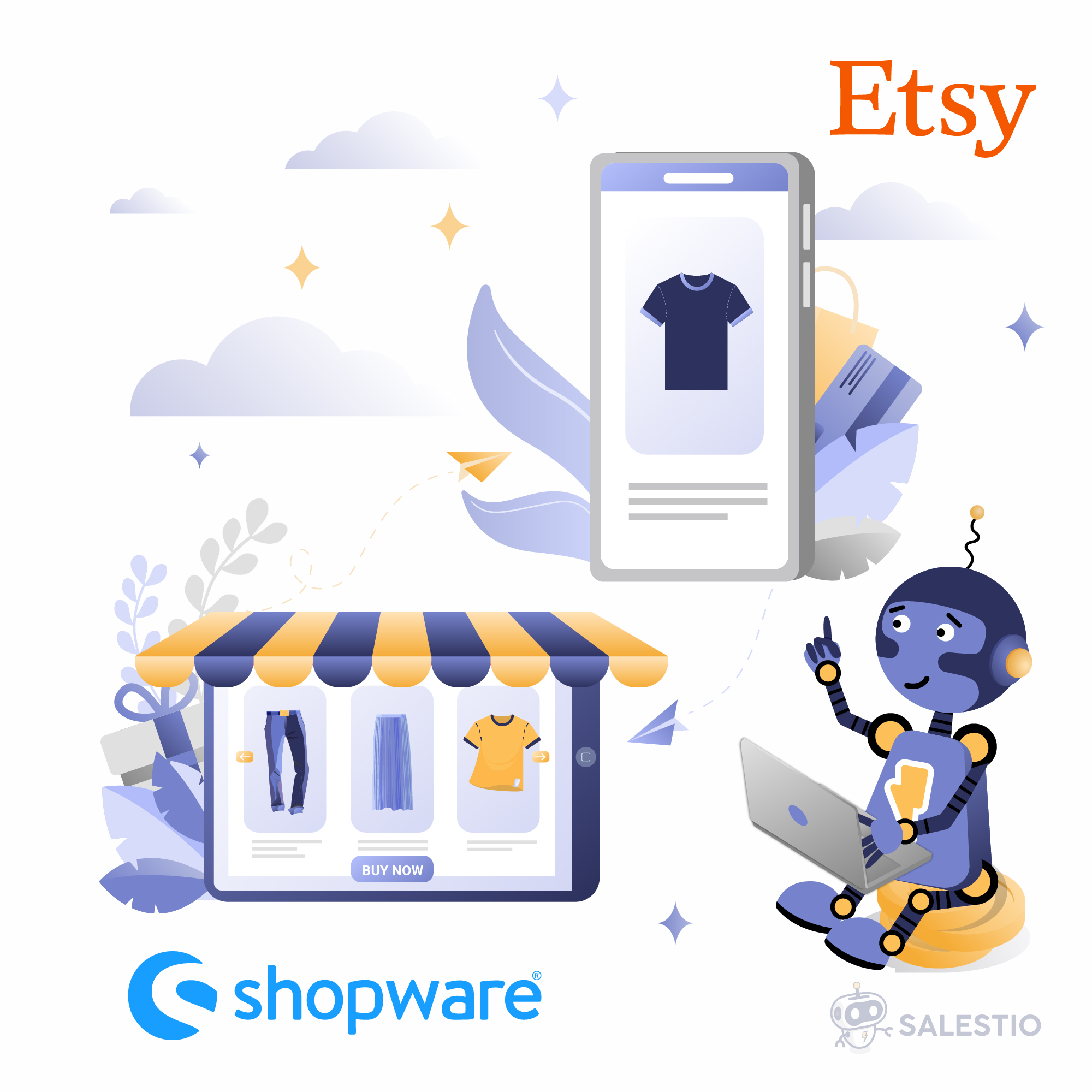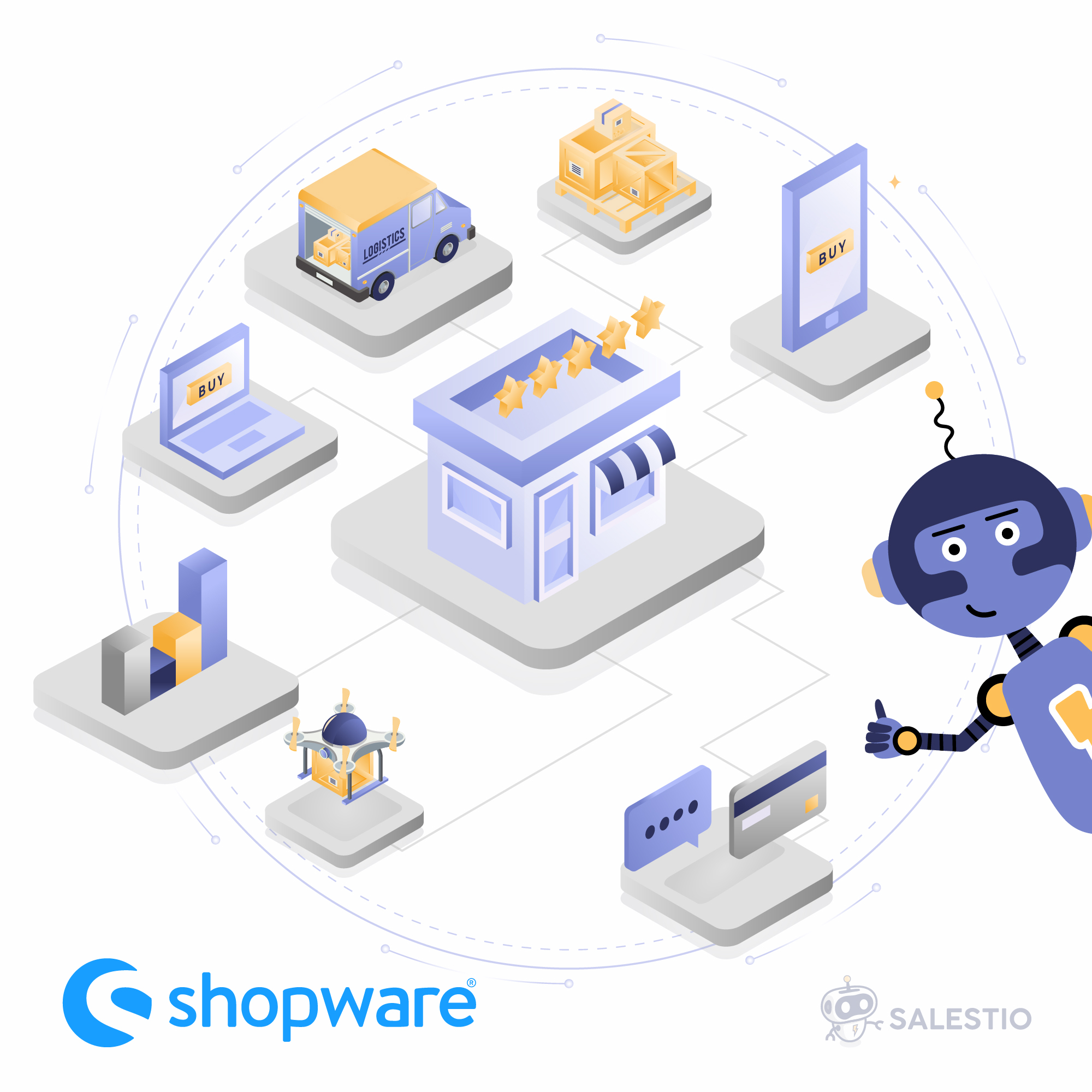23 Feb'24

In modern e-commerce, the efficiency of tracking and managing products has become indispensable. Barcodes became a crucial part of tracking and identifying the items, streamlining inventory processes, and ensuring seamless transactions. Now we have ASINs, GTINs, SKUs, and many more. To efficiently sync your stores, Salestio uses these codes too, so today we explain how each barcode is significant.
In Shopify, both the SKU and the barcode can be assigned on the product page. More about them below.

SKU
SKUs are only used inside of any given store. As a seller, you define what product code to assign to any of your items. A 2-liter bag of orange juice from “Happy Company” can have SKU like HAPPY-ORANG-2. But it can be anything else, and this flexibility is what makes it so useful.
Salestio also uses your SKU when connecting Shopify products to the marketplaces. If you do not have a specific SKU assigned, Salestio will use the Shopify product ID instead.

Global identifiers
GTIN barcodes are regulated and designed to be unique for each product while staying universal. They are useful for identifying the item across organizations. Having this barcode also helps the customer look up a product faster.
The most common form of GTIN in North America a the 12-digit UPC. The rest of the world adopted the 13-digit EAN standard. However, both standards are regulated by GS1 and accepted worldwide.
Amazon requires a GTIN code for most sellers. There is also an option to apply for a GTIN exemption to list items without barcodes. Check this article to find out more about listing products without barcodes. If you are listing items on Amazon using Salestio, make sure to have the barcode on the store items. Check out this guide for a quick start on Amazon sales.
For a lot of categories, eBay requires a GTIN. If you are planning to sell on eBay, it is a great idea to have the barcodes ready.
ASIN

ASIN is a product identifier in the Amazon catalog. Each item listed on the marketplace is assigned a unique ASIN. As mentioned before, products require a GTIN barcode, but the marketplace catalogs both. Products that use the GTIN exemption can still be found through ASIN. While it indicates a specific listing, each item can only have one ASIN. Subsequent sellers that want to sell the same item “connect” to the same ASIN and appear on the same page for buyers.
If Shopify products do not have barcodes but exist on Amazon, and you know their ASINs, you can assign ASINs to the products right in the Selling List in Salestio. Salestio can take advantage of this system to help you link the Shopify items to existing listings on Seller Central. Please check out this article to learn more.
The creation of new ASINs can be automated with Salestio for more efficient sync of your store items. Recently we made a guide with an example on charging adapters.
eBay ID

eBay identifiers are different from Amazon. On eBay, the product ID only reflects a specific listing from a specific seller. If an item was listed and later deleted, its ID will not be saved. Upon relisting the item, a new eBay ID will be created. When a GTC (Good ‘Til Canceled) listing is stopped and relisted again, it will retain the original ID. Managing products in different statuses is made easier with Salestio to streamline relisting and updating items.
As eBay is divided into multiple marketplaces, users from different parts of the world will get different search results. However, users with a link can still get access to a specific listing regardless of the original marketplace. For example, if an item was listed on ebay.de, users with a link can still access it on ebay.com, while searches on ebay.com will not bring any results.
Etsy ID

On Etsy, the identifiers are similar to the eBay system. When you list a product on Etsy, it is assigned a unique Product ID, which is associated with that specific item throughout its lifecycle on the platform.
This identification system enables Etsy to handle a diverse range of products and ensures a smooth experience for both sellers and buyers in navigating and conducting transactions within the marketplace.
Conclusion
Understanding barcodes is crucial for promoting a store, and more importantly, managing the items. To simplify the management of your marketplace sales and keeping track of identifiers, try Salestio. The app is available with a 30-day trial on the Shopify App Store.





